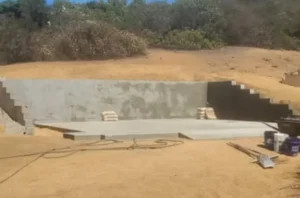Losing a loved one is one of life’s most challenging experiences. The grief can feel overwhelming, especially when faced with the task of arranging a funeral planning checklist that truly honors their memory.
I remember when my family lost someone close, the sheer number of decisions and considerations we had to make in such a short time felt anything but manageable.
However, having a guide to follow made the process less difficult and helped us focus on what mattered most—cherishing the memories of our loved one.
Planning a funeral can be stressful
Planning a funeral can be stressful, but using a well-organized checklist is a useful tool to keep things on track. From arranging key items to delegating responsibilities among families, this approach makes it easier to ensure all important aspects are made within a short time frame.
I recall using this method to manage the duties of coordinating arrangements and sharing tasks, like communicating with grieving relatives, which not only saved time but reduced unnecessary confusion.
A checklist truly transforms an overwhelming task into something more structured and achievable.
How long does it takes to arrange a funeral?
When arranging a funeral, it often takes about two weeks to properly organise everything. However, every situation is different, and in some cases, the process can be arranged much sooner, or it may be delayed due to unforeseen circumstances.
I remember helping a friend whose family faced a sudden and suspicious death, requiring a coroner to investigate, which extended the timeline. Such events add an emotional layer to an already delicate process, making careful planning even more crucial.
Funeral arrangements often depend on whether any official procedures are involved. For straightforward situations, tasks like booking a venue and coordinating services can move quickly. However, if there are legal complications or specific requirements, delays are unavoidable.
Understanding the specific needs of the funeral and staying flexible is key to navigating these moments with grace and efficiency.
Why a Checklist is Helpful?
Using a checklist during such a difficult time serves many important purposes, especially when arranging funerals for a loved one. A well-structured plan helps avoid missing details or steps and ensures every tribute feels personalized and meaningful.

For my family, it became a roadmap that guided us through the challenging moments, outlining each component of the process so nothing was overlooked. Whether it’s delegating responsibilities among family members or deciding how to honor your loved one’s life, the checklist keeps everything clear and typical tasks made more manageable.
Funerals aren’t all alike, and having a checklist helps create a service that reflects the unique story of your loved one. It allows you to delegate tasks, such as arranging tributes, to others so you can focus on the parts that are most emotionally significant to you.
This outline becomes your foundation, helping you walk step by step through each decision and ensuring that every general arrangement, no matter how small, contributes to a truly heartfelt farewell.
Step 1: Notify Close Family, Friends, and Employer
One of the first and most immediate steps in funeral planning is to notify key people about your loved one’s passing. Start by informing close family and friends, as well as the deceased’s employer, if applicable.
For my family, we found it helpful to ask a trusted person to help spread the word, which reduced the number of taxing calls we needed to make ourselves.
Key Steps:
- Inform the executor, doctor, and crematorium to handle the body.
- Arrange for an officiant (e.g., priest, pastor, or other religious leader) for the funeral service.
- Involve extended family, next-of-kin, and others in planning.
Step 2: Arrange for Funeral Home Services
When planning a funeral, arranging funeral home services is a crucial step. The funeral home becomes your main guide to handle essential details like transporting the body, preparing it for viewing, and arranging for burial or cremation.
Key Tasks for Funeral Home Services:
- Transporting the body to the funeral home.
- Preparing the deceased for viewing or service.
- Arranging burial or cremation and placing a death notice.
- Providing an itemized list of services and issuing a certificate.
- Helping with the obituary, casket, urn, or other options.
- Hosting the funeral and offering family support.
- Ensuring all costs are clear and what’s needed is included.
Step 3: Choose Burial or Cremation
Choosing between burial and cremation is one of the most major decisions when planning a funeral for a loved one. This choice depends on many factors, such as the deceased’s wishes, religious beliefs, or family customs.

Understanding the environmental impact and available resources can also help guide this right choice for your family. A burial allows for memorialization through a permanent place, while cremation gives the flexibility of creating meaningful moments wherever you decide to scatter the remains.
There is no wrong way to say goodbye; it’s all about what feels most meaningful to you and your family.
Key Points to Consider:
- Burial offers a physical marker like a plot for future visits.
- Cremation is less expensive and offers greater portability.
- Respect the deceased’s wishes, religious beliefs, or family customs.
- Evaluate costs, environmental impact, and available resources.
- Choose what best honors your loved one and their legacy.
- A hybrid option combines elements of both traditional services and cremation.
Step 4: Select a Casket or Urn
When deciding between burial or cremation, selecting a casket or urn becomes an important choice. Personalizing these items can make them more meaningful.

Whether it’s an elegant wood design, a durable metal piece, or an eco-friendly option, the final decision reflects the values and wishes of the deceased. The key is to explore the available options and find what feels right for your family.
Key Considerations:
- For burial, choose a casket based on material (wood, metal, or eco-friendly).
- Personalize the appearance with engraving or custom designs.
- Evaluate cost to ensure it fits within your budget.
- For cremation, explore urns in a variety of styles.
- Consider keepsake urns or jewelry to preserve a small portion of the ashes.
Step 5: Plan the Funeral Service
The funeral service is the centerpiece of saying goodbye, giving family and loved ones a space to grieve, reflect, and remember. To ensure the service runs smoothly, a funeral director can help arrange the sequence of events.
These moments can be further personalized with meaningful excerpts or a display of the deceased’s cherished memories, creating a truly special farewell. Every detail can be carefully tailored to celebrate the unique aspects of the person’s life.
Key Elements for Planning the Funeral Service:
- Location – Select the location (place of worship, home, chapel, graveside, or elsewhere).
- Music – Choose music, songs, and readings (poems, passages, or meaningful excerpts).
- Officiant – Arrange for an officiant, religious leader, or speakers to deliver a eulogy or remarks.
- Visual – Add visuals, such as a photo slideshow, memory table, or personal touches.
- Funeral Director – Work with a funeral director to prepare the sequence and printed materials, like bulletins or prayer cards.
Step 6: Determine Disposition of Remains
Choosing the disposition of remains is an essential part of funeral planning. While deciding, think about what best suits your family’s wishes and values. Whether choosing a permanent burial plot or a flexible cremation option, the goal is to create a respectful resting place for the remains.
Make sure to consider all options thoroughly and verify any regulations in advance to avoid unexpected challenges.
Key Steps for Disposition of Remains:
- For burial, choose a cemetery and plot and decide if you’ll be present for the interment.
- For cremation, consider whether to scatter the ashes or keep them in an urn at home.
- Explore scattering gardens or other designated areas for ashes.
- Check local regulations and any restrictions on interment or scattering.
- Seek clarity about the rules before deciding.
Step 7: Write an Obituary
Writing an obituary is a way to honor a loved one’s life and share important information about their death.
The obituary can share details of the memorial plans, inviting friends and family to celebrate the life of the deceased. Obituary serves as both a tribute and a guide for those wishing to honor the deceased.
Key Details to Include in an Obituary:
- Full name, age, date, and place of birth and death.
- Cause of death and key biographical details, like education, career, or military service.
- Names of surviving family and those who preceded them.
- Memorial plans, along with a message, prayer, or quote.
- Published in a newspaper or shared online as a lasting record.
Step 8: Handle Flowers and Donations
Handling flowers and donations is an important part of planning a funeral service. Many families choose to have flowers at the service, but deciding what to do with them afterward is equally important.
If you don’t know what to do with funeral flowers then below article will help you in it.
- More Post: What to Do With Funeral Flowers After a Funeral: A Complete Guide to Creating Lasting Memories
Whether you choose flowers or focus on a charitable cause, these details add a personal and thoughtful touch to the funeral service. Ensuring these arrangements reflect the deceased’s values makes their memory even more impactful.
Key Considerations for Flowers and Donations:
- Include flowers as part of the funeral service and decide their use afterward.
- Donate flowers to nursing homes or hospitals to spread kindness.
- Suggest charitable donations to support an important cause close to the deceased’s heart.
- Share these details in the obituary or notice to guide attendees.
Step 9: Reception Planning
A funeral reception is a meaningful way for loved ones to gather and find comfort in an informal setting. Whether hosted at a funeral home or an outside venue, it provides an opportunity for support, sharing memories, and strengthening connections.

Key Considerations for Reception Planning:
- Choose a location, such as a funeral home or an outside venue.
- Arrange food and drink, either catered or through a potluck.
- Add a memory book for people to write or a photo display.
- Plan logistics, including seating, utensils, and an inviting environment.
- Focus on creating comfort, fellowship, and meaningful sharing.
Step 10: After the Funeral/Cremation Service
After the funeral or cremation service, there are several tasks to complete to show appreciation and organize important matters. Sending thank-you cards or notes to the people who helped with the event is a thoughtful way to acknowledge their support.
Consulting an expert ensures that everything is handled properly in challenging legal and financial situations.
Key Tasks After the Funeral or Cremation:
- Send thank-you cards or notes to those who provided support.
- Store the deceased’s personal documents in a safe place.
- Handle administrative matters like:
- Obtaining certified copies of the death certificate.
- Locating and executing the will.
- Contacting banks and credit card companies.
- Transferring utilities and canceling subscriptions or memberships.
- Closing social media accounts.
- Seek help from estate attorneys, financial advisors, or other experts for guidance in complex situations.
What does a funeral director do?
A funeral director plays a key role in planning and managing the details of a funeral, ensuring the process is smooth for the grieving family. They handle tasks like transporting the body to the funeral home, preparing it for viewing, and helping families make choices about coffins, urns, and other important elements.
They also arrange for pall-bearers, the hearse, and other cars needed for the service. From managing legal paperwork to placing death notices in newspapers or online, a funeral director simplifies many aspects of this emotional process.
In addition to logistics, they assist with printing materials like service programs, ensuring everything is ready for the event. Their guidance extends to helping families with tributes, placing ashes, and even arranging charitable donations in memory of the deceased.
Whether it’s coordinating facilities for the service, advising on budget-friendly options, or helping organize personal touches like music, a funeral director provides expertise and support at every step.
How to plan a funeral without a Funeral Director
Planning a funeral without a director can save money, but it requires more time and effort. You’ll need to handle legal paperwork, arrange burial, or book a crematorium yourself. Start by selecting a coffin directly from makers—there are eco-friendly options like wicker, cardboard, or handmade wood coffins to consider.
Taking a hands-on approach can make the process more personal and cost-effective while ensuring everything is done according to your preferences.
It’s important to understand and meet any legal requirements during the process. From organizing the necessary paperwork to ensuring the burial or cremation is arranged properly, these tasks can be managed independently.
Choosing environmentally friendly options like eco coffins can further align with your values, while also reducing costs. By being proactive, you can create a respectful farewell while remaining within budget.
FAQs
How to prepare for a funeral checklist?
List all tasks such as notifying family, choosing burial or cremation, arranging services, and handling paperwork. Prioritize tasks and assign responsibilities.
What are the steps of planning a funeral?
Notify loved ones, choose burial or cremation, select a venue, arrange services, prepare legal documents, and organize transportation and receptions.
What does a funeral plan include?
A funeral plan includes service details, burial or cremation options, costs, music, readings, eulogies, transportation, and post-service receptions.
How do I organize my funeral?
Decide on burial or cremation, select a venue, outline service details, choose speakers and music, and document all wishes for your family.
How can I honor my loved one’s memory after the funeral?
Create a memory book, hold a celebration of life, plant a tree, or donate to a meaningful cause.
What is a green funeral?
A green funeral uses eco-friendly materials and practices, such as biodegradable caskets, natural burials, or sustainable cremation options.
How long do I have to make decisions?
Typically, decisions should be made within a few days to two weeks, depending on cultural and logistical factors.
Should children attend funerals?
Yes, if they are emotionally prepared and it’s explained in a way they can understand. It can help them process grief.
Conclusion
Planning a funeral is never easy, but a well-thought-out checklist can make the process smoother and more manageable. From notifying loved ones to selecting meaningful ways to honor their memory, each step is an opportunity to create a farewell that reflects their life and values.
Whether you choose a traditional service, an eco-friendly option, or something deeply personal, the goal is to provide comfort and support for those grieving while celebrating the legacy of the deceased. By staying organized and thoughtful, you can ensure a respectful and meaningful goodbye.
More Posts:








